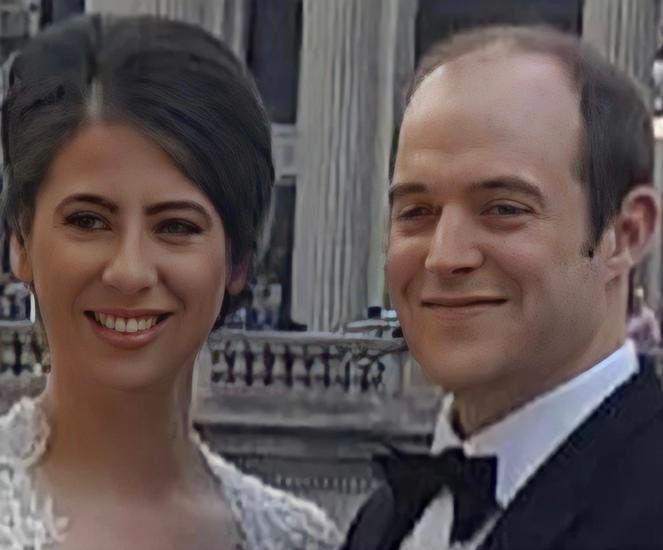Mikel Murfi. PHOTO BY VITALIY PILTSER
By Brendan Costello
"I Hear You and Rejoice" at the Irish Arts Center, through Oct. 21 (in rotating repertory w/ "The Man in the Woman's Shoes")
Mikel Murfi's "I Hear You and Rejoice," a one-person, multi-character performance now playing at the Irish Arts Center, is a revelation, but not in the way one might expect. Framed around a highly idiosyncratic funeral service for Kitsy Rainey, the magnetic firebrand of a small Irish town, we are introduced to a broad array of characters, vignettes, voices and sound effects, created and delivered by the insanely talented Mikel Murfi. After the first or maybe the second character shift, we are so fully in the performer's hands that the transitions seem organic and effortless.
Kitsy's small town contains multitudes, as did she (and do we all) – this is no surprise. The notion that "In the midst of death, we are in life" (especially in an Irish play framed around a funeral) should not come as a surprise either (if it does, you should probably get one of those online DNA test kits because you may not really be Irish). If you've heard of Murfi's "The Man in the Woman's Shoes" (which appeared at the Irish Arts Center a few years ago and is currently being performed in rotation with "I Hear You and Rejoice"), his virtuosic performance and pitch perfect writing should also come as no surprise. Don't get me wrong -- it is still awesome to behold, and his embodiment of so many personalities and voices, using subtle gesture and sometimes over-the-top hilarity is transfixing and deeply entertaining.
Taken together, Murfi's writing and his kinetic performance are like a Hadron Collider of sympathetic imagination, and we marvel at the world he has created. Or, perhaps, this piece makes us marvel that such things and people, in their insanity and fallibility and tenderness, do really exist in our world. That is one important revelation in "I Hear You and Rejoice," but as powerful as it is, it is nothing new.
The true revelation in this play is the character of Kitsy's husband Pat Farnon, whose consciousness and voice we most frequently return to throughout. Pat is the chief mourner at this funeral, and it makes sense we would have the greatest access to his thoughts and his memories. In addition to being Kitsy's husband and the village cobbler, though, Pat is also mute, and is losing his eyesight. It is easy to forget this because of the vivid performances of each scene, including one of several tours de force: the manic radio broadcast, recounting an infamous football match that made Kitsy something of a legend in not only her town but the county as well. Murfi's recreation of the announcer's account is hilarious and (if you'll pardon the pun) pitch-perfect, but behind this clever bit of stagecraft and writing is the realization that this is how Pat (voiceless and losing sight) experienced that pivotal moment. We get glimpses of how others hear Pat's speech, basically just grunts and moans, but in a sense it makes everything Pat tells us, and the overall work itself, that much more eloquent, and even transcendent. With Pat's perspective, Mikel Murfi reveals to us a hidden world by showing us a man who cannot speak, giving him a voice, and making it sing. When you hear it, you will rejoice too.
Brendan Costello Jr. teaches creative writing at the City College of New York. He is a member of the board of directors of Irish American Writers and Artists, Inc.









